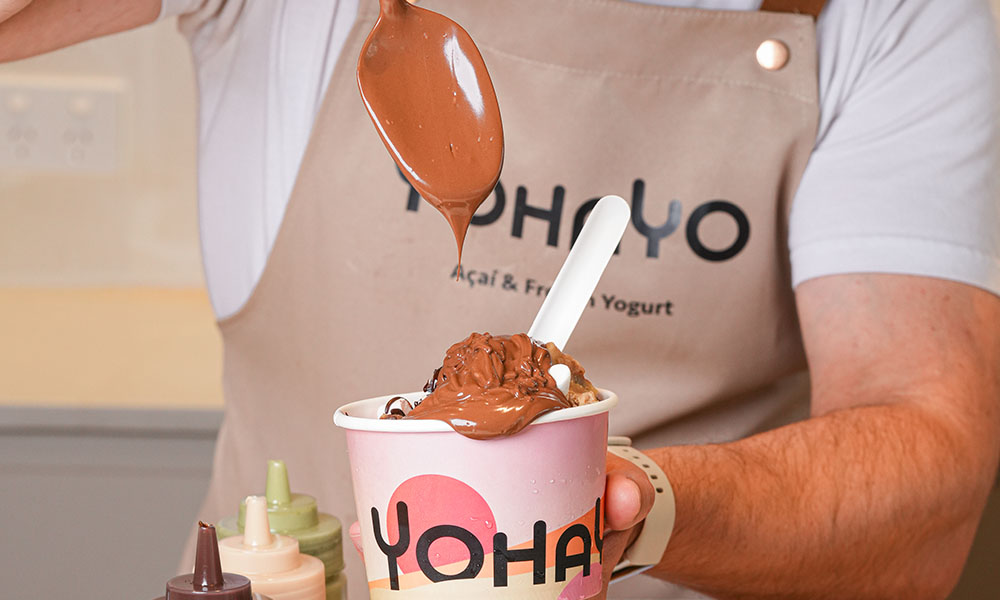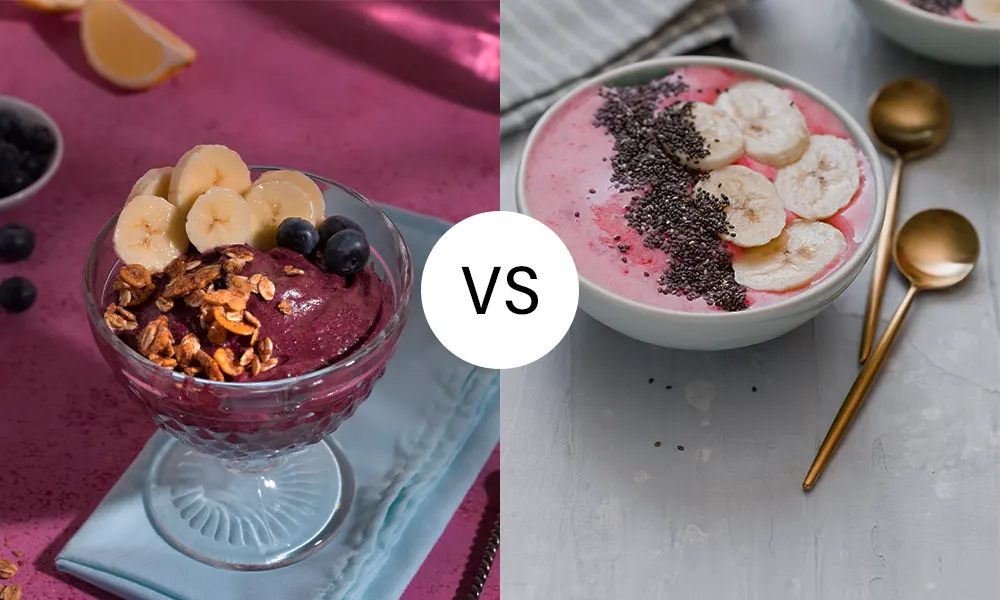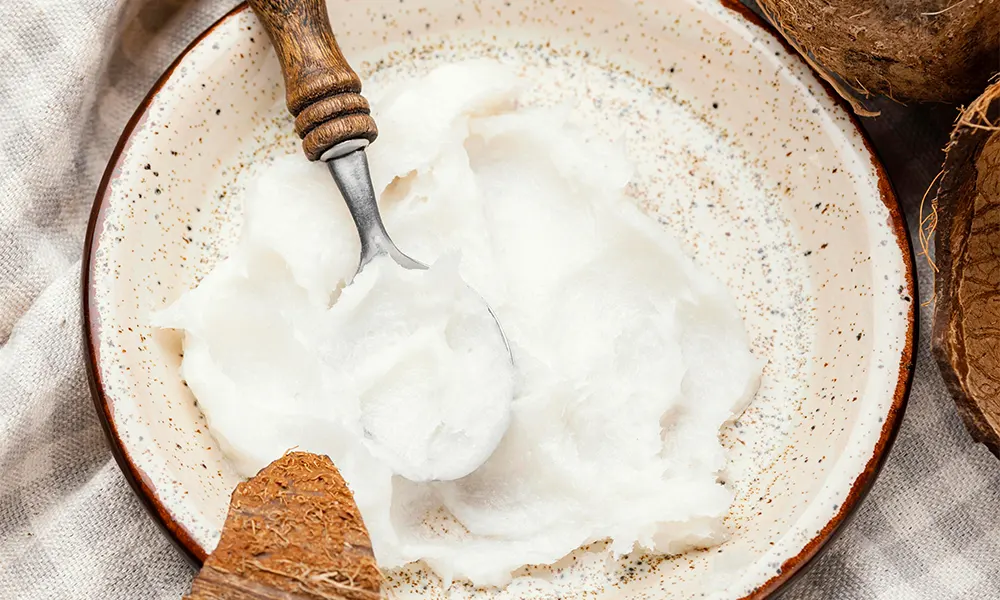Crafting your own frozen yoghurt is a treat, but deciding between a frozen yoghurt maker and traditional methods can leave you in a froyo dilemma. Whether you prioritise convenience, cost, or creativity, both methods offer unique benefits. Here’s an expanded guide to help you choose the best path for your homemade froyo adventure.
Frozen yoghurt Maker: Modern Convenience Meets Creamy Perfection
A frozen yoghurt maker is your ally for smooth, creamy froyo with minimal effort. Designed to churn while freezing, these gadgets deliver consistently professional results.
Advantages:
- Effortless Creaminess: Continuous churning prevents ice crystals, creating a rich, smooth texture.
- Time-Saving: Prep your mix, and the machine handles the rest in under an hour in many cases.
- Versatility: Many models accommodate ice cream, sorbet, and gelato too.
- Reliability: Uniform results every time, perfect for perfectionists!
Disadvantages:
- Investment Cost: Some models can be pricey, though affordable options exist.
- Space Concerns: Kitchen counter or cupboard space is needed.
- Maintenance: Cleaning detachable parts requires a bit of effort.
Traditional Methods: Rustic Charm and Budget-Friendly Froyo
Using the freezer and a trusty spoon, traditional methods are cost-effective but demand patience. Typically, the yoghurt base is frozen in a shallow dish, stirred regularly to break up ice crystals.
Advantages:
- Cost-Effective: No fancy equipment needed just a freezer and a bowl.
- Accessible: Utilise what’s already in your kitchen.
- Flexible Process: Adjust the recipe or freezing process without worrying about machine limitations.
Disadvantages:
- Time-Intensive: Stirring every hour is a commitment that requires vigilance.
- Inconsistent Texture: Icy crystals may sneak into the mix.
- Physical Effort: Frequent stirring becomes tiresome.
Which Method Should You Choose?
Deciding between a frozen yoghurt maker and traditional methods ultimately comes down to your lifestyle, priorities, and personal preferences. Each method has its unique strengths and trade-offs, so understanding them helps you make an informed decision.
Choose a Frozen yoghurt Maker if convenience, consistency, and smooth textures are your top priorities. These handy appliances simplify the process, allowing you to create professional-quality frozen yoghurt without breaking a sweat. With their built-in churning and freezing mechanisms, they eliminate the need for manual stirring, ensuring your froyo has a perfectly creamy consistency every time. Frozen yoghurt makers are ideal for frequent froyo lovers who enjoy experimenting with different recipes, flavours, and even other frozen treats like sorbet or gelato. They’re also a great fit if you value time efficiency or often serve frozen desserts to family and friends. However, keep in mind the initial investment and space requirements, as these machines can be bulky and pricey.
Stick to Traditional Methods if you’re a budget-conscious froyo enthusiast or someone who values a hands-on approach. These methods require minimal equipment, just a freezer, a container, and some patience making them perfect for those with limited kitchen space or who prefer not to splurge on specialised gadgets. While it’s more labour-intensive, traditional methods allow you to connect with the process, offering a sense of achievement with each creamy bite. This approach works well if you don’t mind spending extra time manually stirring and scraping to prevent ice crystals from forming.
In the end, the choice boils down to your priorities: convenience and consistency versus cost and creativity. Either way, the result is a delicious, homemade frozen yoghurt tailored to your taste.
Expert Tips for Froyo Success
Want to elevate your frozen yoghurt game? Whether using a frozen yoghurt maker or traditional methods, these expert tips will ensure your creations turn out perfectly every time.
For Creamier Results: Use full-fat or Greek yoghurt as your base. These options offer a richer, creamier texture compared to low-fat or non-fat varieties. The higher fat content helps reduce iciness, resulting in a luxurious mouthfeel.
Customisation is Key: Don’t settle for plain froyo. Mix in fresh fruit, nuts, honey, or even chocolate chips to add depth and variety to your creations. Experiment with spices like cinnamon or vanilla extract for unique flavour twists.
Freeze Smart: Always chill your mixture before pouring it into a frozen yoghurt maker. This step helps the machine freeze the yoghurt more efficiently, ensuring a smoother consistency. For traditional methods, use a shallow container to speed up freezing and stir every 30 minutes to prevent large ice crystals from forming.
By following these tips, you’ll create frozen yoghurt that rivals your favourite dessert shop, all from the comfort of your kitchen!
Final Thoughts
Whichever path you choose, modern convenience or time-tested tradition the journey to homemade frozen yoghurt is as delightful as the destination. Experiment, savour, and enjoy the process.
Ready to embrace the world of frozen yoghurt? Don’t just dream about your perfect froyo; make it happen! Visit Yo Hayo for frozen yoghurt inspiration and tools to simplify your journey. Need guidance? Contact Us to get you closer to your froyo goals.
FAQs
-
Can I make frozen yoghurt without a machine?
Yes, you can make frozen yoghurt without a machine using the traditional method. Start by preparing your yoghurt mixture and pouring it into a shallow container. Place it in the freezer and stir vigorously every 30–60 minutes to break up ice crystals. This process usually takes several hours and requires patience, but it eliminates the need for specialised equipment. For smoother results, use full-fat yoghurt and ingredients that freeze well. While the traditional method might not achieve the same creamy texture as a frozen yoghurt maker, it’s a cost-effective and accessible way to enjoy homemade froyo.
-
Is a frozen yoghurt maker worth the investment?
A frozen yoghurt maker is worth it if you enjoy making froyo regularly and value convenience. These machines simplify the process by churning and freezing the yoghurt simultaneously, resulting in smooth and creamy textures. They also save time, typically producing frozen yoghurt within 20–40 minutes. Additionally, many models are versatile and can make other frozen treats like sorbets or ice creams. However, the cost and storage space required may be considerations. If you have a passion for homemade froyo and prefer consistent results with minimal effort, a frozen yoghurt maker is an excellent investment.
-
Which method is faster: frozen yoghurt maker or traditional?
A frozen yoghurt maker is generally faster than the traditional method. With a machine, the process takes about 20–40 minutes, depending on the model and the recipe. The consistent churning also ensures that the texture is smooth and free of ice crystals. In contrast, the traditional method requires freezing the yoghurt mixture in a shallow container and stirring it every 30–60 minutes to achieve a similar result. This can take several hours and involves more manual effort. If speed and convenience are your priorities, a frozen yoghurt maker is the more time-efficient option.
-
Can I customise my frozen yoghurt with either method?
Absolutely! Both methods allow for customisation to suit your taste. With a frozen yoghurt maker, you can add mix-ins such as fruits, nuts, or chocolate chips during the last few minutes of churning to ensure even distribution. For the traditional method, stir your desired ingredients into the yoghurt mixture before the final freeze. Popular additions include fresh berries, crushed cookies, and honey for natural sweetness. Experiment with flavours and textures to create a personalised frozen yoghurt that suits your cravings. Regardless of the method, customisation adds a delightful, creative element to the process.
-
Does a frozen yoghurt maker produce better texture than traditional methods?
Yes, a frozen yoghurt maker generally produces a smoother and creamier texture than traditional methods. The machine continuously churns the yoghurt mixture as it freezes, preventing the formation of large ice crystals and ensuring a consistent result. In contrast, the traditional method relies on manual stirring during the freezing process, which can lead to uneven textures and iciness if not done meticulously. While the traditional approach is effective for those without a machine, achieving the same level of creaminess requires significant effort and attention. For consistently superior texture, a frozen yoghurt maker is the preferred choice.





